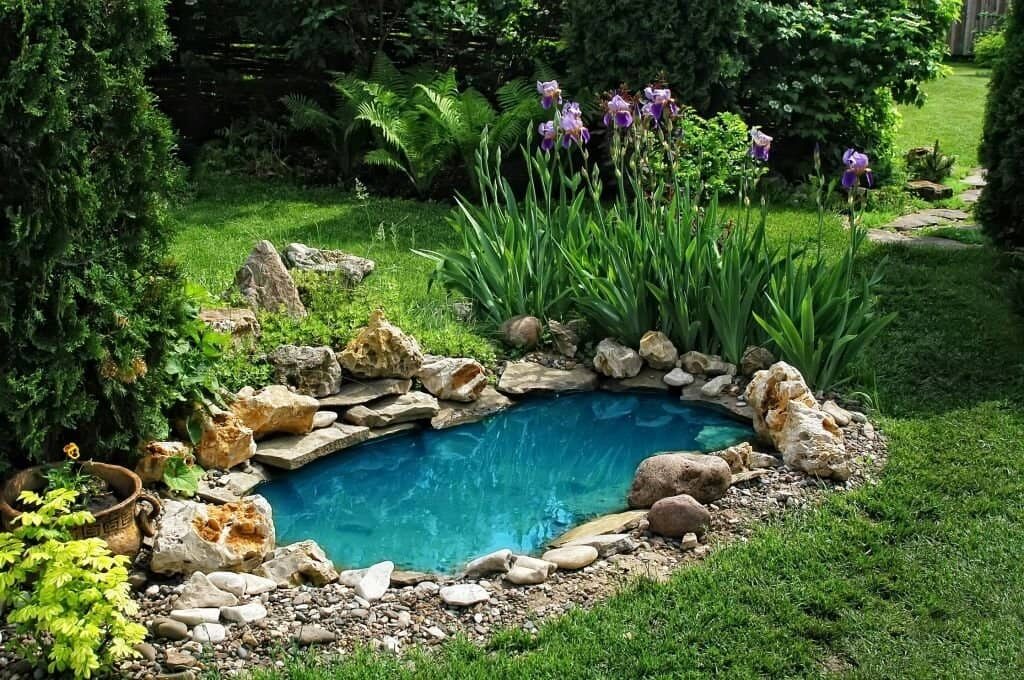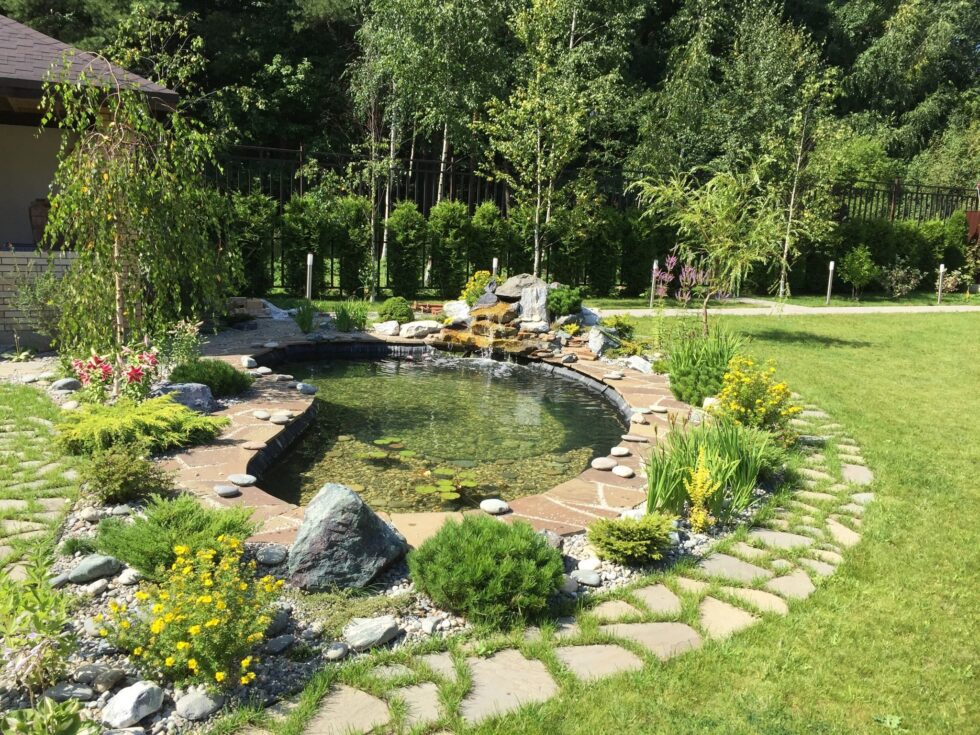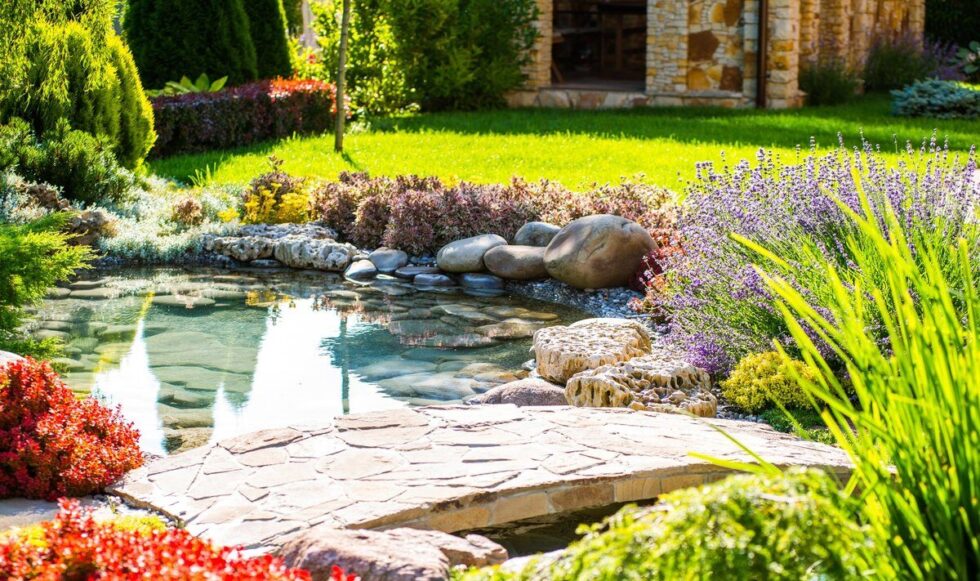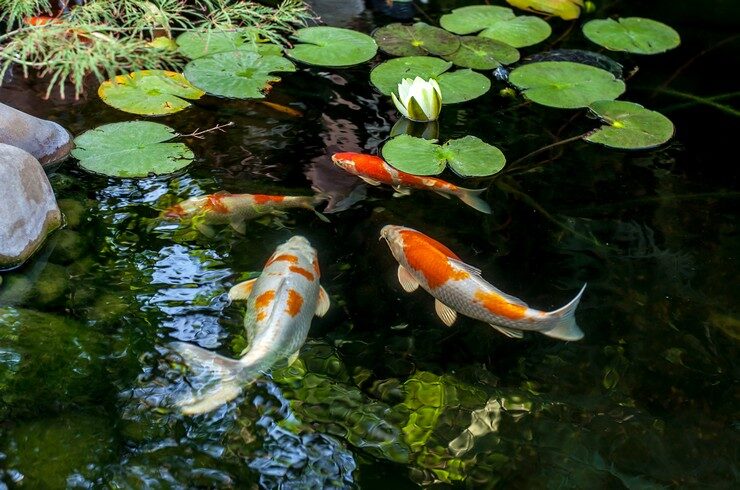How to build a garden pond in Germany: from liner to water filtration

A garden pond is more than just a decorative feature – it creates a small ecosystem, adds value to the property, and offers a natural space for relaxation. In Germany, garden ponds are increasingly popular among homeowners who want to combine aesthetics with sustainability. Water attracts birds, frogs, and insects, providing biodiversity in urban and rural gardens alike. With the right planning, it is possible to build a pond yourself without hiring expensive landscaping companies. The key elements are choosing the right location, selecting durable materials, installing proper filtration, and preparing for seasonal changes. German suppliers offer a wide variety of liners, pumps, and ready-made sets, so anyone can design a pond tailored to their needs, as highlighted by G.business.
Choosing the location and planning the pond
The location determines how well the pond will function in the German climate. Too much sunlight can lead to algae growth, while too much shade prevents plants from thriving. The ideal balance is 4–6 hours of sunlight per day, which allows plants to photosynthesize but keeps the water from overheating. Trees nearby should be avoided, as falling leaves clog filters and create sludge. German homeowners also need to think about proximity to electricity since most pumps and UV filters require a reliable connection. A pond should be designed with three depth zones: a shallow edge (20–40 cm) for marginal plants, a middle zone (60 cm), and a deep section (100–120 cm) for overwintering fish. Careful planning ensures that the pond is not only beautiful but also easy to maintain year-round.
Key criteria for location:
- At least 3 meters from house walls or foundations.
- Not directly under large trees.
- Balanced sunlight: 40–60% of the day.
- Easy access to electricity.
- Practical access for cleaning and servicing.
Materials: pond liner, prefabricated forms, or concrete
The material defines both durability and cost. In Germany, the most common solution is a pond liner, either PVC or EPDM rubber. PVC is cheaper and widely available in hardware stores like OBI, Hornbach, or Bauhaus, but it lasts only 10–15 years. EPDM rubber liners are more expensive but can last up to 40 years, and they remain elastic even in cold German winters. Prefabricated plastic forms are another option, especially for smaller decorative ponds (200–1000 liters). For large or permanent installations, concrete basins are sometimes used, though they are more expensive and require professional installation. Whichever option is chosen, a protective underlay of sand and geotextile is essential to prevent damage from stones and roots.
| Material | Price in Germany | Lifespan | Advantages | Disadvantages |
|---|---|---|---|---|
| PVC liner | from €6–8/m² | 10–15 years | Affordable, easy to install | Less frost-resistant |
| EPDM liner | from €12–15/m² | 30–40 years | Very durable, UV- and frost-proof | More expensive, heavier |
| Prefabricated form | from €120 | 5–10 years | Quick installation | Limited size & shape |
| Concrete basin | from €150/m² | 30+ years | Maximum durability | High cost, complex maintenance |
Construction process: from excavation to filling with water
Building a pond starts with marking the outline using a rope or garden hose. The excavation must be stepped, creating shallow, medium, and deep zones. After digging, the bottom should be compacted and covered with a layer of sand, then a protective geotextile. The liner is laid with at least 50 cm overlap beyond the edges, which are secured with stones. Once the pond is slowly filled with water, the liner will settle naturally into place. The edges can then be decorated with gravel, stones, or plants for a natural look. At this stage, homeowners should also install tubing for pumps and filtration, as well as protective conduits for electrical cables. A carefully executed construction phase guarantees the pond’s stability for years.

Steps for construction:
- Marking the shape and excavating.
- Leveling and applying sand + geotextile.
- Installing liner or prefabricated form.
- Gradual water filling and liner adjustment.
- Securing edges with stones or gravel.
- Installing pump and filtration system.
Filtration and pumps: keeping water clean
Without proper filtration, any pond will quickly turn green and emit odors. In Germany, where summers can be warm, filtration is crucial even for small ponds. A basic setup includes a pump and a mechanical filter. For larger ponds (over 10 m³), biological filters combined with UV lamps are standard, destroying algae and harmful bacteria. The pump must be sized correctly: it should circulate the entire pond volume within 1–2 hours. Prices vary: small pump-filter sets start around €100–200, while professional systems for koi ponds or larger installations cost €800–1500. Adding a skimmer helps remove leaves, while aerators or fountains improve oxygenation. Reliable filtration not only improves water quality but also reduces maintenance time.
Types of pond filtration:
- Mechanical filtration (sponges, meshes).
- Biological filtration (bacteria colonies).
- UV sterilization (algae control).
- Skimmers (surface cleaning).
- Aeration (air pumps, fountains).
Plants and pond decoration
Plants are essential for both aesthetics and ecological balance. In Germany’s temperate climate, many species thrive throughout the year. Marginal plants like irises and cattails filter water and stabilize the edges. Water lilies and yellow pond lilies cover the surface, creating shade that limits algae growth. Submerged oxygenators such as Elodea or hornwort release oxygen into the water and compete with algae for nutrients. Around the pond, mosses, ferns, and ornamental grasses create a natural transition to the garden. For many German homeowners, LED lighting, wooden bridges, or small waterfalls are popular additions that increase both beauty and oxygen circulation. Proper plant selection ensures that at least 50% of the pond’s surface is covered, balancing the ecosystem naturally.

Recommended plants in Germany:
- Shallow zones: irises, cattails, pickerelweed.
- Middle zones: water lilies, yellow pond lilies.
- Deep zones: Elodea, hornwort.
- Borders: mosses, ferns, grasses.
Fish and pond maintenance
Adding fish makes the pond more lively, but it also increases maintenance needs. In Germany, koi carp, goldfish, and tench are among the most popular choices. For fish to survive the winter outdoors, the pond must be at least 120 cm deep in some areas. Each fish requires around 200–300 liters of water, meaning stocking density must be carefully considered. Feeding should stop when temperatures drop below 8–10°C, as fish metabolism slows. Maintenance includes cleaning filters every 2–3 weeks, partial water changes every 6–8 weeks, and removing debris like leaves. In autumn, a net should be placed over the pond to prevent leaf accumulation. With proper care, a fish pond can thrive year-round in Germany’s climate.

Basic maintenance rules:
- Clean filters every 2–3 weeks.
- Change 15–20% of water every 2 months.
- Stop feeding fish below 8°C.
- Cover pond with net in autumn.
- Use aeration in winter.
How much does a garden pond cost in Germany
The cost depends on size, materials, and equipment. A small decorative pond can be built for €500–800, while medium-sized ponds range from €2000–4000. Large koi ponds with professional filtration and lighting often exceed €7000. Annual maintenance costs – including electricity, filter replacement, and fish food – range from €150 to €600. It’s advisable to create a cost plan before starting construction to avoid surprises. German DIY stores (OBI, Hornbach, Bauhaus) and garden centers offer complete pond sets for beginners, while specialized suppliers provide professional koi pond equipment.
| Pond size | Materials | Filtration | Plants | Fish | Total |
|---|---|---|---|---|---|
| Small (2–3 m²) | €200–300 | €150–250 | €100 | €50–100 | €500–800 |
| Medium (5–8 m²) | €400–700 | €400–800 | €250 | €200–300 | €1200–2000 |
| Large (10–15 m²) | €800–1500 | €800–1500 | €400 | €500–1000 | €2500–4000+ |
Most common mistakes when building a pond
Many German homeowners make similar mistakes when creating their first pond. Placing the pond in full sun leads to algae blooms, while too shallow construction makes it unsafe for fish in winter. Buying the cheapest filter often results in cloudy water after just a few weeks. Leaving liner edges exposed leads to UV damage and leaks. Overcrowding with plants or fish disrupts oxygen balance and creates stress for aquatic life. These mistakes shorten the pond’s lifespan and increase maintenance costs. By planning carefully and investing in quality materials, they can be avoided.
Top 5 mistakes:
- Full sun exposure – water overheats and turns green.
- Shallow depth – fish cannot overwinter.
- Cheap filtration – water becomes cloudy.
- Unprotected liner edges – fast degradation.
- Overcrowding with fish and plants – oxygen depletion.
Low-maintenance plants – top 5 for German ponds
Not all plants require constant attention. For beginners in Germany, it is best to choose hardy, fast-growing species that naturally clean the water. Water lilies bloom beautifully all summer and provide shade. Canadian pondweed (Elodea canadensis) is a strong oxygenator and adapts well to local waters. Yellow irises are easy to grow in shallow zones and add bright color. Hornwort is a submerged plant that acts as a natural filter. Yellow pond lilies (Nuphar lutea) are native to Germany and support biodiversity. These species keep ponds stable without much effort.
Best low-maintenance plants:
- Water lilies (Nymphaea).
- Elodea canadensis.
- Yellow iris.
- Hornwort.
- Yellow pond lily (Nuphar lutea).
Wintering ponds in Germany: top 5 tips
German winters vary by region, but frost is always a concern. Small ponds can freeze completely, endangering fish and plants. To prevent this, ponds should be at least 120 cm deep in some zones. Before winter, remove leaves and sludge to avoid gas build-up. Stop feeding fish below 8°C, as they enter semi-hibernation. Pumps and filters should be removed and stored indoors, while aerators or de-icers keep small areas ice-free. Hardy plants like irises and Elodea can remain outside, but tropical species should be overwintered indoors. With proper care, ponds survive even harsh German winters.
Tips for wintering:
- Remove leaves and sludge in autumn.
- Stop feeding fish under 8°C.
- Remove pumps and filters for storage.
- Use aerator or floating de-icer.
- Keep only hardy plants outdoors.
A garden pond in Germany is not just a decorative element – it’s a sustainable ecosystem that enriches the garden. With proper planning, the right liner, efficient filtration, and suitable plants, anyone can create a low-maintenance pond that thrives in Germany’s climate. Adding fish makes the water feature even more lively, but requires attention to depth and oxygen levels. Common mistakes such as poor filtration or shallow construction can be avoided with careful preparation. Ultimately, a well-designed pond becomes the heart of the garden, a place for relaxation, and a contribution to local biodiversity.
Stay connected for news that works — timely, factual, and free from opinion — and insights that matter now: Focusing on Textures: How to Play with Surfaces to Create a Stylish Interior.